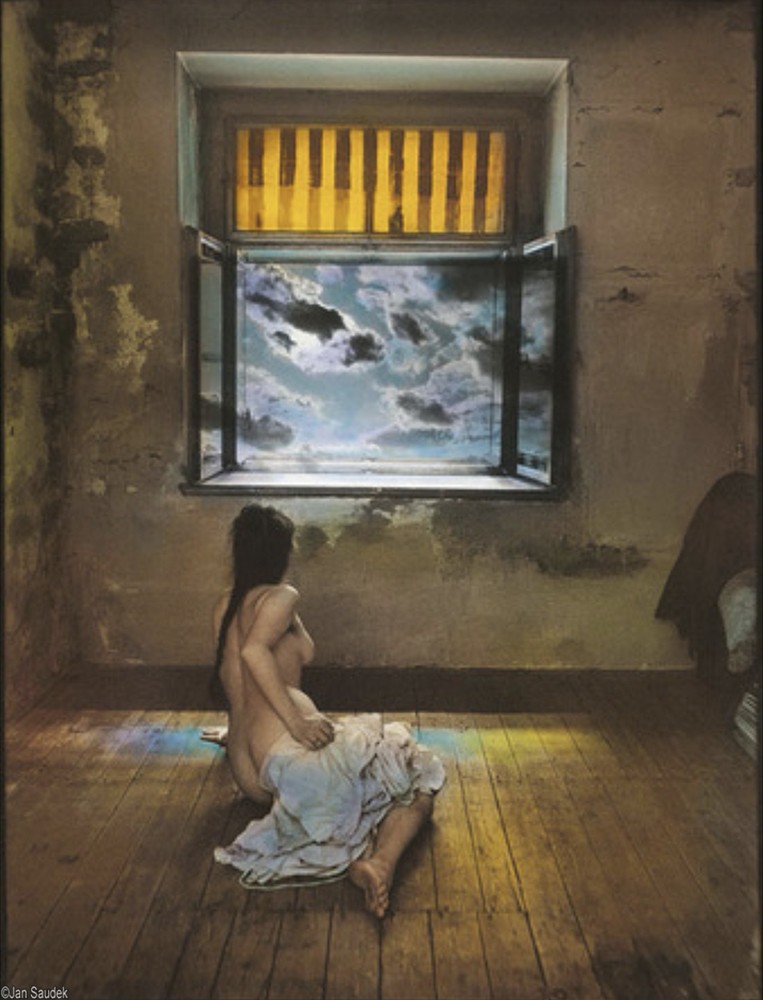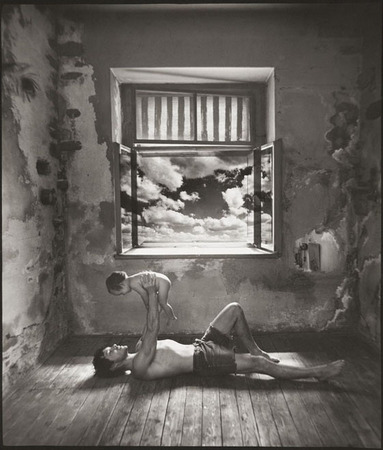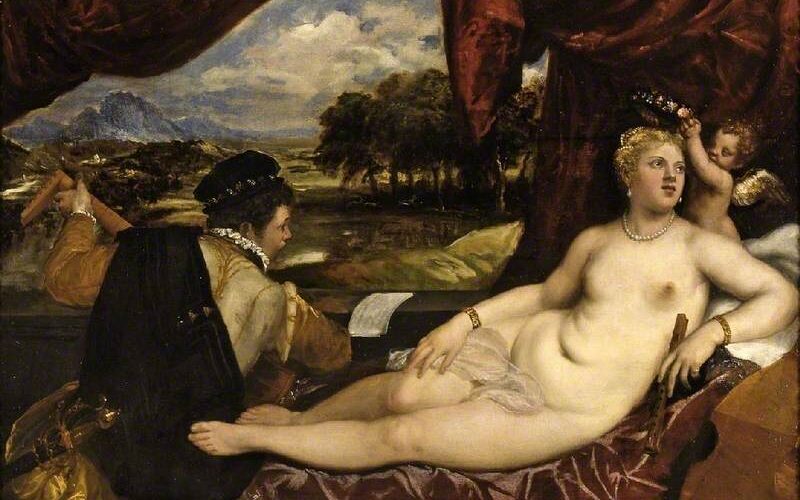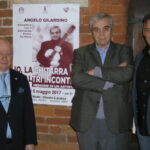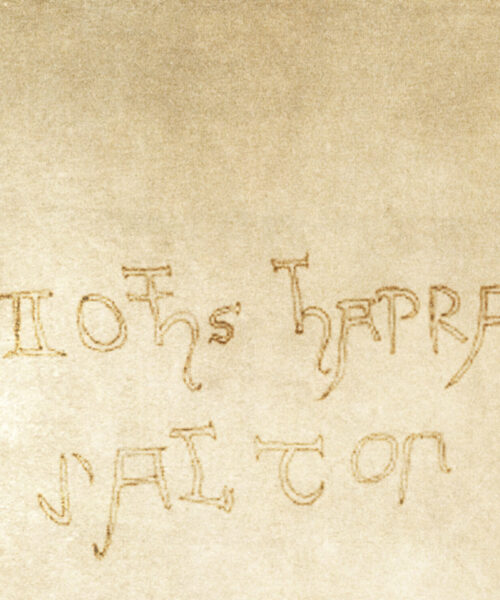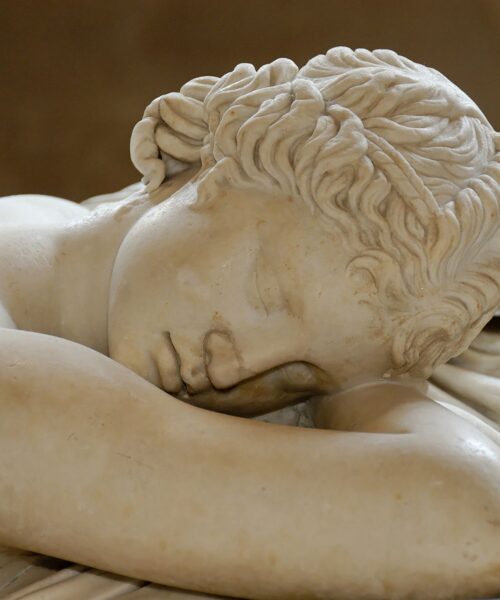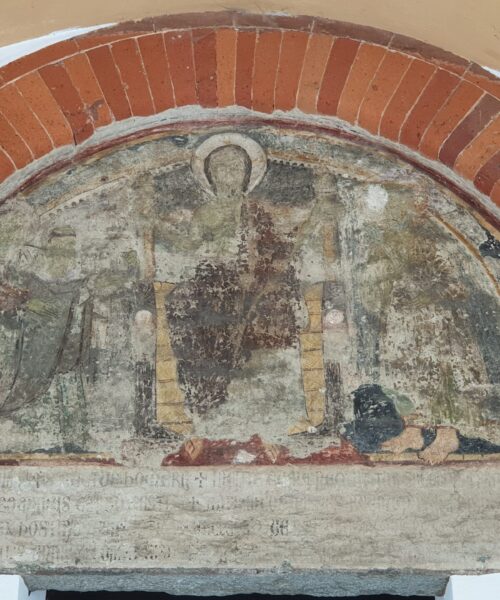When discussing the “spatial concept,” one’s mind immediately leaps to Lucio Fontana’s famous “slashes,” an icon that has profoundly marked the collective imagination, including those not regularly immersed in the art world. This term, widely debated and analyzed by critics, refers – in very simplified terms – to the artist’s attempt to explore dimensions beyond the painted surface, seeking alternative spaces to extend the artistic experience beyond the canvas’s limits.
Without dwelling excessively on Fontana, or entering the debate about him, I wish to focus instead on how, in eras preceding his famous “slashes” or “holes,” other artists explored this “beyond” of the canvas, albeit using different methods.
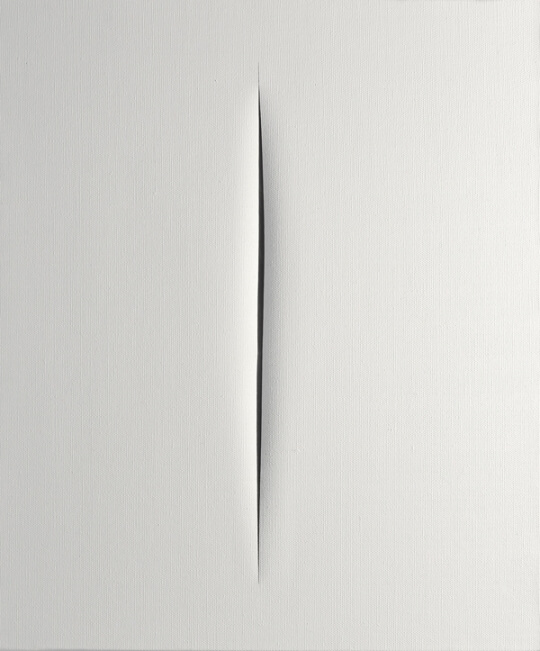
My interest centers on the use of windows in art, an element with profound meaning and multiple implications. A window, whether open or closed, suggests the existence of an “inside” and an “outside,” symbolically representing the private and the public, respectively. Delving deeper into this concept, one might interpret the exterior as an unknown and potentially treacherous realm, while the interior represents the familiar, the known, the safe.
In this brief examination, I propose an analysis of selected paintings and photographs, chosen to demonstrate how the window has been employed in various ways: from those opening onto landscapes, completing the scene, to those introducing light, illuminating the portrayed subject; from windows emphasizing perspectives to those suggesting an escape towards a mysterious exterior.
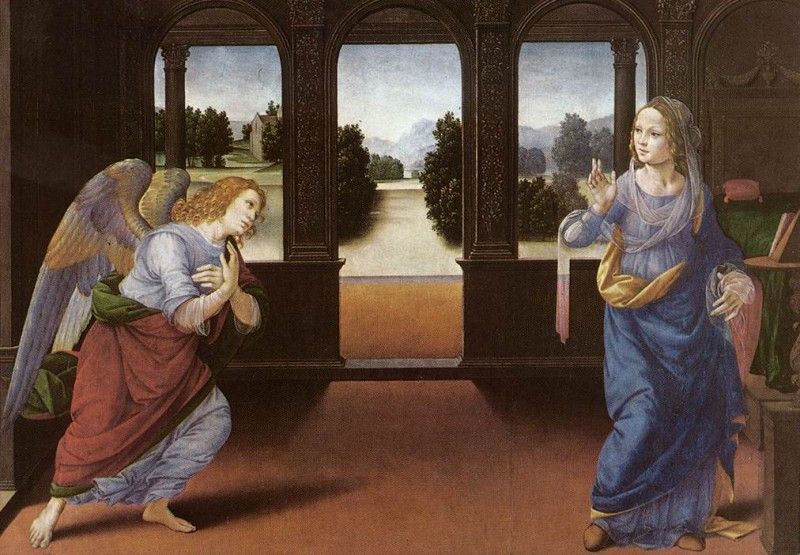
In Titian Vecellio’s “Venus with a Lute Player,” the window serves as a theatrical backdrop. The open curtain reveals a landscape that becomes a visual vanishing point, without creating a juxtaposition between inside and outside. In this work, the perspective is harmonized in an ideal balance, where each plane holds equal importance.
Lorenzo di Credi, in his “Annunciation,” employs a well-defined window to extend the perspective and enclose the environment, isolating it from the outside and ordering the scene.
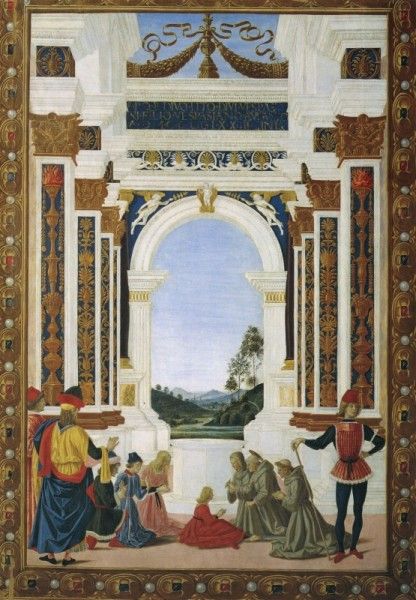
In Pietro Perugino’s “Saint Bernardino Healing a Young Girl,” the background landscape, framed by columns and an arch, enhances the Renaissance architecture, overshadowing the human figures and leading the viewer towards infinity.
Conversely, in Jan Vermeer’s “Woman Reading a Letter in Front of a Window” and “Woman Writing a Letter with Her Maid,” the window is not used to “exit,” but to “bring in” light, which in turn creates atmosphere and narrates emotions.
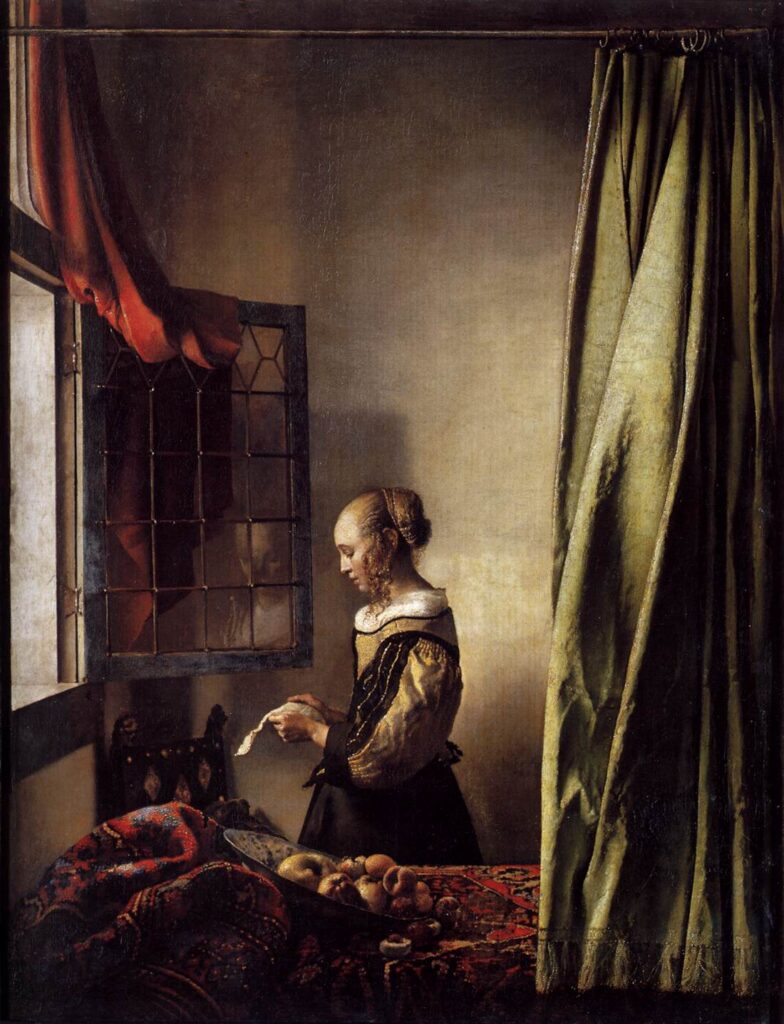
Donna che legge una lettera davanti alla finestra
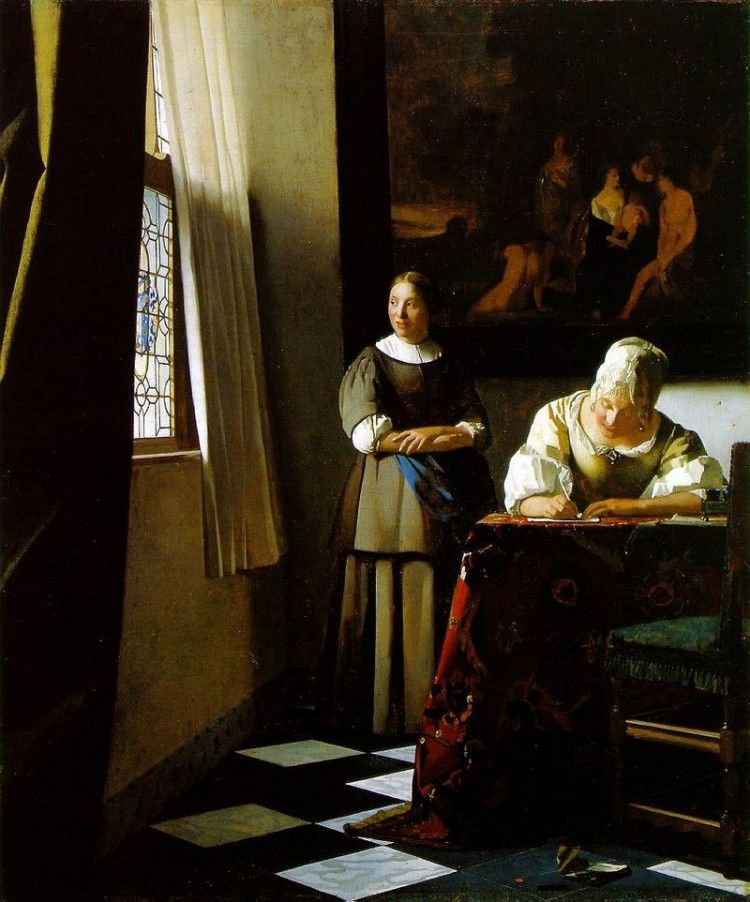
Donna che scrive una lettera alla presenza della domestica
Concluding with Jan Saudek, who often used the window of his studio as a backdrop for his scenes, it is evident that the desire to explore beyond, to escape from reality, is not limited by time or technique.
These examples demonstrate that Fontana’s “slashes” innovation was not an isolated gesture, but the pinnacle of a centuries-old artistic quest to explore and represent what lies beyond the visible surface.
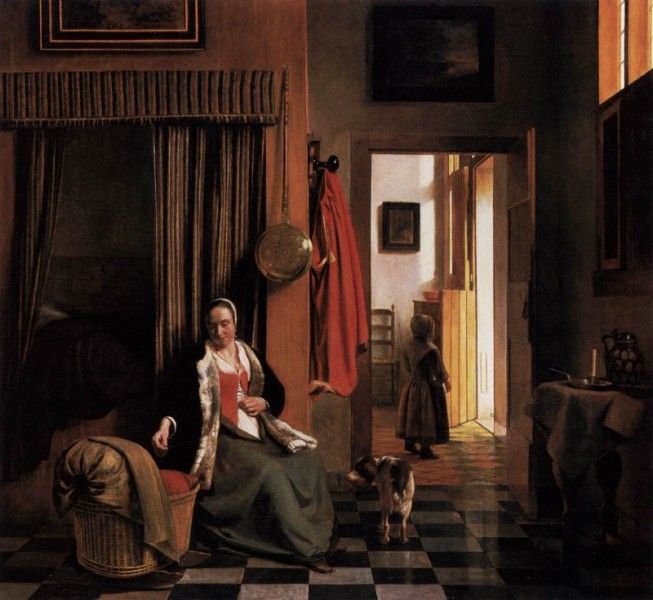
Donna che si allaccia il corpetto vicino a una culla
